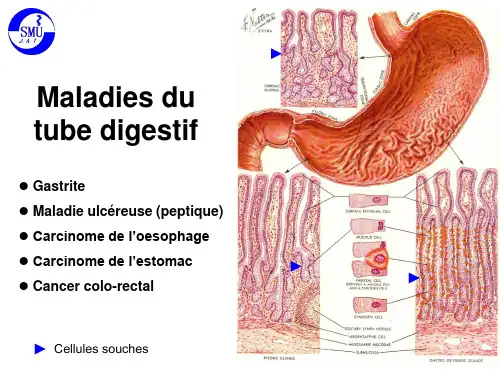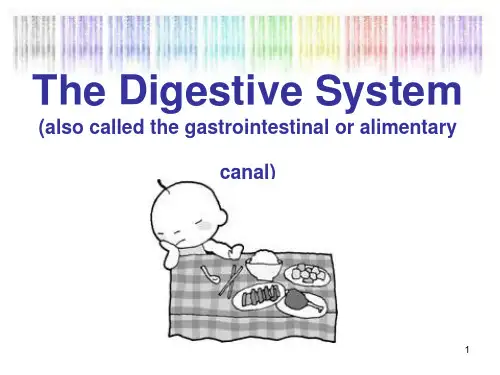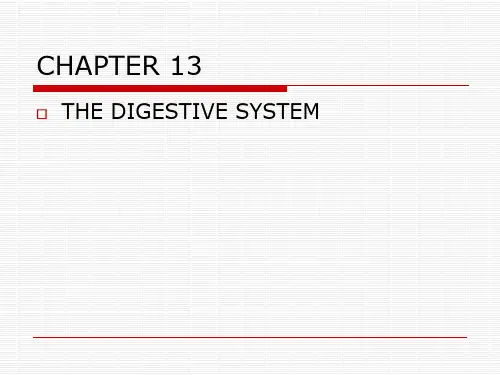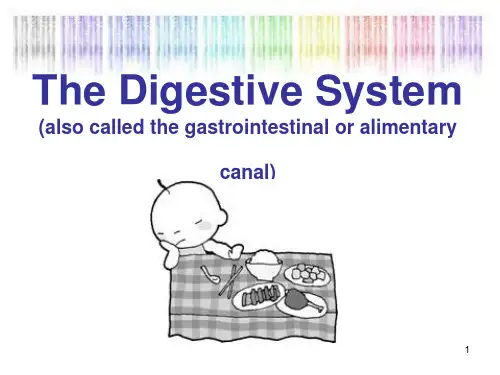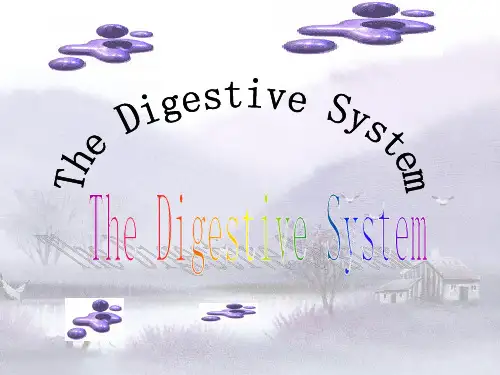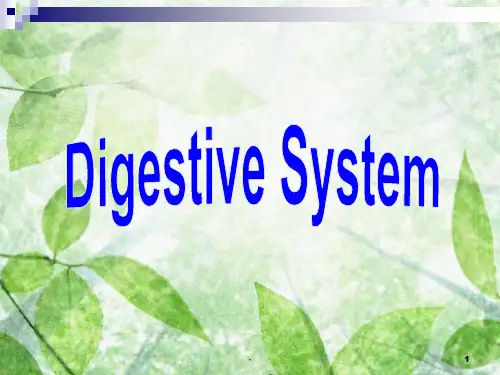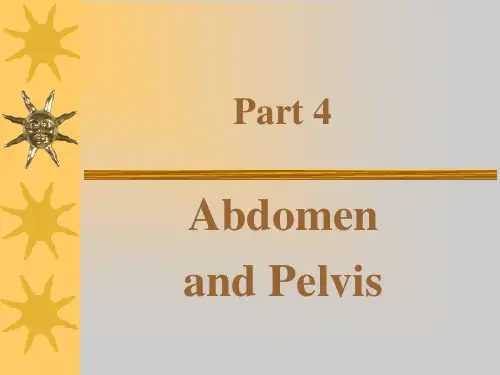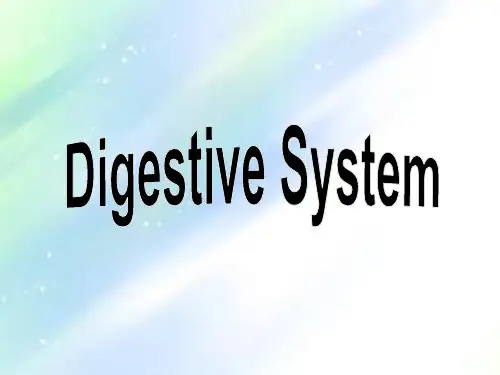关于消化系统的英文PPT
Introduction
The primary functions
Ingestion Digestion Absorption Elimination
Anatomically, the digestive system consist of a 30-foot long, mucous membrane-lined tube beginning with mouth and ending with the anus
As the stomach fills ,the rugae unfolded, exposing the digestive glands and stimulating them to secret digestive enzymes and hydrochloric acid. These substances help transform food present to a semifluid substance.
The oral cavity
The teeth The tongue The palate
Chewing and swallowing
•The teeth are used to cut ,tear and crush food into smaller
pieces. Each tooth consists of pulp, cementum and enamel.The teeth are classified incisors , cuspids and molars.
Gallbladder
B关TBTGTAGGTETEGTpTTIbTSSCIbGTIGAhITAhTAttntlalyyhhhhhhhhhhhheesllmmssnhaaaaaaoommitii于ddsmmrseeeieieiieeessaeololllllssssfttoaallllllrrsaaiihhlbbbbbbttwddooiidduedpletep消dollwhppppnninneeellllllllv,,cceeiihsirssaaaaaaumraarrrrssdiinguuaeiennhh化oooooooossmssdddddadcttttegffytiroottwlliiuttpppcccctaahrddddddcoooopp:eeoosia系yrrleeeeogafhhhacceeeeeeaorrnnrrssteemmoanriiihssssnttnooaaalrrrrrrsycttvccssluu统rrxiiyssssdddgggaateannetrrfea,aaaahuuuuucceeutiiiiee的stisssssccecnnehhrssscchssfnwyiilrdddiiddaccccoef英connffcbbsraaaaaii..striomrrggalltllidnlllooeeeiiisllll文oltssmsssllllpoiheeeebbioolmlngtfteeiw,,hraaahddddPiliiddsettlellnoaahhaeeeeiPsndppppllloappssree,,oootuiigiTeeeeeesstrritteinnnvoonrrpemrrrrss,hhsggguueiiiiittcpssssseeaaggtggaiimmmtttteosnsiissallaaaaaalnnyyylrotuuulllleetssccssissssslhrrhnosss,,ooeeistiiiiuuegddesssstencccggvvennh,....eemuuugweeeevsfftcsslllooirrtnnaaaimluttqiaancloonllrrriddsunnollduerrttttpeeooayyeehnpuuusiddpssttdeeasicbbbdhhp,,ariuddteeesooseeeaeeslecetllarr.neeeddxxsoddaorvvtppxxxmneetfiibtbotttoohttueeedrraaapyyfssryybnnnolllamiitt3ettnnedddhhffuhhbuu0tggiiiorrgeeennntdnnoo-hlhlfttgggaoccccybbohharmttyyvoofffoeetsdiirrrttooadtd.seeoooeiddgnnrleyymmmssnioiiesso..ggr,n..aavspueetttgetnnhhhrssseo,sddeeettdsdiivvmerrpppuaneeeechhhcusullteeggeaaacitaoraallsrrroaaiyyynessupbnnnnnseensaiddxxxlsstoessssmtttsf.bboooaapaetiillhnnatttiigmrrhhheddsuueeeebsbbwcssrsssiioittaannniitttlmmnyooo,,otrroemmmneeuufo-tmmlllaaa,haariwnccctteoofiieahhhonnvvbdtoeegg...eldosstrttuhhoppfibsreedoooemmsriimssetbrooatteeootnnbhagsssssemin((oeeddmnrccaeebirrnnotteeeoogdudttxxtddwlhiiiyffniiiiimggcctttohoeeaapttsstmbhiihoottiioevvonnvdeeue))eyts.eeshsonnfferrapzzoolnsyyhmmdmm.agetteehhunsseesdaaiannnngdddwaitsh
